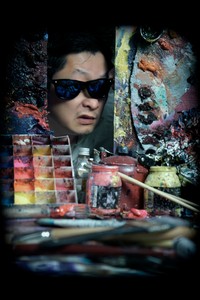
To Create a Vision: Jia Aili in Conversation with Philip Tinari
Jia Aili speaks with curator Philip Tinari about his arts education, his working process, and his desire to expand the talking points around painting.
November 5, 2020
Curator Shen Qilan speaks with the artist about his latest works.
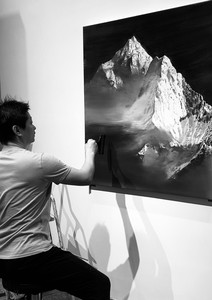
Jia Aili working on the painting Everest (2020) in his studio in Beijing
Jia Aili working on the painting Everest (2020) in his studio in Beijing
When I stepped into Jia Aili’s studio in Beijing, the artist was in the process of creating a new series of paintings. A snowcapped mountain occupied the center of each canvas, lending the studio an aura of tranquility. These works—a departure from his previous paintings, which brim with speed and drama—represent uncharted territory for the artist. Our conversation took place in front of them, venturing from a discussion of mountains he had seen and indigenous peoples he had met along the Sino-Russian border to an exploration of faith in painting, the expressive potential of art, and the role of sincerity and intuition in the creative process.
—Shen Qilan
Shen QilanCould you talk about your hometown in northeast China? It’s the cradle of many outstanding writers, isn’t it? What do you see as the defining spirit of that place?
Jia AiliI began to study painting in Dandong, a small city along the bank of the Yalu River, before moving to Shenyang for college. During those years I felt like I was living in a cultural wasteland while thinking about and painting things that were quite far away. Now when I think back on those years, I would describe it as a sense of barrenness, an experience of living in a place that was extremely cold for most of the year. What I did back then was to imagine color when there was a lack of color. It felt quite meaningful to think about art in a lonely place.
SQLWhat made you start painting mountains?
JALI have a plan to walk along all the international borders of China and the Yangtze, Yalu, and Yellow rivers. I first covered China’s borders with North Korea, Russia, and Mongolia. I have set foot along the Ussuri and Amur rivers and in the Greater Khingan Range. Visiting these places, and thinking about the literature I have read, has not only verified some of my historical musings but has also given shape to a number of intangible ideas I developed while reading history books. For example, the sacred cave of the ancient Xianbei people, the Argun River, the sacred mountain of the ancient Khitan people, Liao and Jin Dynasty battlefields in the Changbai Mountains, the Middle East Railway, and even Zhenbao Island—if you haven’t visited these places, it will only be an intellectual feeling. Being there generated a unique kind of experience—one that goes deeper than an intellectual perception of history. This is a good experience for an artist to have.
SQLWestern art history includes a long-standing tradition of landscape painting. Earlier painters have portrayed a profusion of landscapes, especially mountains. So what is new about your experimentation?
JALYes, Caspar David Friedrich is one of the great artists I have learned from.
In front of the mountains I paint on canvas, I place a piece of transparent glass on which the painting process continues until the entire work develops into something else. The process is totally organic. I wait to see if it results in images that were unknown before. The most enjoyable part comes right after I finish painting the mountains: when I place the glass in front of the canvas, I take a breath, wait for a flash of inspiration, and express it in several improvised lines on the glass.

Jia Aili, Mountain and Wave Line, 2020, oil on canvas and silver pen on tempered glass, in artist’s frame, 104 × 78 × 27 ½ inches (264 × 198 × 70 cm). Photo: Yang Wei
SQLAre you painting a specific mountain or an abstract one?
JALI wouldn’t say it’s abstract, but in my imagination it indeed comprises more elements, enabling the prominent parts to stand out even more and the borderless elements to evolve toward infinity.
SQLWhy do you choose to use glass? Does it offer you some new possibility?
JALGlass offers the utmost degree of visual simplicity. Does incorporating this medium make the work an installation or a painting? I think they are still paintings rather than illustrations, because my actions are fundamentally painterly ones. What I’m looking for is a fresh impulse for painting—something that is wilder that I can use to revolutionize certain previous beliefs.
SQLYou once mentioned that painting a canvas is like the creation of a spectacle. With mountains as your subject, has it become even harder to create spectacles? Many designers are obsessed with the idea of designing a signature chair—of taking a familiar form and creating something iconic. When you choose to paint mountains, are you consciously creating a challenge for yourself?
JALAll artists have their own challenges to face. Not every canvas bearing pigment can be called a painting. Painters need to exert themselves in order to earn the right to call their works paintings. It’s the time and effort that painters put into their works that finally endow them with meaning and further testify to the existence and significance of the painters themselves.
When I’m painting mountains, I make every effort to calm my mind and to rid myself of all thoughts except the action of pigment application. Previously when I started to work, I usually needed to wait for or evoke a certain psychological state. Yet mountains seem to require a different mode. I try to quiet my thoughts and to face the canvas with complete sincerity. The way I depict these mountains reflects my state of mind or mode of perception.
They do not correspond to any specific historical incident, nor are they the representation of the zeitgeist of any historical period. I want them to exude a sense of freedom that is open to pluralistic interpretations. They should be something that viewers can relate to on a personal level. I don’t want them to be either “Eastern” or “Western”; nor should they be historical or literary. I want to rid my paintings of the sense of history or even the sense of time—to remove all external references.
when I’m drawing on glass, it seems I’ve rediscovered the excitement I felt when I first took up the paintbrush.
Jia Aili
SQLCompared to mountains captured in a photograph, what is the additional information that your mountains alone can convey?
JALI would say it’s the delicate feelings I had during the application of the paint, feelings that contemporary society often ignores. These emerge during the incipient stage of a canvas, even before any image has been formed. Why do we enjoy looking at paintings? It’s because they involve the movement of human hands. If the same image were printed by a machine, we might simply lose interest. I’m not sure if this sounds self-important, but it is exactly how I perceive it. When we look at a canvas by [Vincent] van Gogh and pay attention to his brushstrokes, we find a rich store of information, as if we’re standing right beside him.
SQLSo what is the satisfaction your mountains have given you?
JALYears into my career as a painter, my techniques and procedures have continued to improve and to become more and more complex—possibly more “professional.” Yet recently I have been thinking about the original impulse that led me to become a painter. Now, when I’m drawing on glass, it seems I’ve rediscovered the excitement I felt when I first took up the paintbrush. It feels so free, so interesting, so fresh, and so enjoyable, just like when I first started to paint.
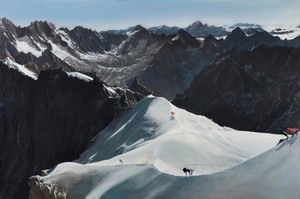
Jia Aili, Take You to the Mountains, 2020, oil on canvas, 65 ¾ × 98 ½ inches (167 × 250 cm). Photo: Yang Chao Studio
SQLBy drawing on glass you have retrieved the excitement that attracted you before images were formed.
JALExactly! It has led me back to reexperience that joy. And this is something extremely precious for a mature painter. The mature painter knows how to make a good painting, but all kinds of practical concerns await.
SQLSo what is being crystallized on the glass is that emotional joy that has been generated through the painting of mountains—the same joy you felt before your own images were formed. What appears on the glass is the fruit of your emotions instead of any conscious calculation. In this sense it’s different from abstract paintings that are the result of highly condensed rational thinking. As a viewer, I can feel my mind echoing with your mountains via these lines on the glass; they seem to hold a secret key to the mountains.
JALYou’re absolutely right.
Last year, I took a road trip along the Yunnan–Tibet Highway from the Temperate Zone up toward the plateau. The mountains and rivers I saw left the impression that I was sailing against the current of time—the higher I got, the simpler and clearer they became. When I looked down from the snowcapped mountaintops, I saw glaciers and rivers formed by the meltwater—they perfectly manifested the principle of entropy or even the way our universe moves. They had been distilled into something that was abstract as well as emotional.
SQLI’ve been thinking about the musicality of your canvases. If your previous works are like fiery symphonies imbued with a kind of destructive power, this new series is more like the sound of a cello—much more sonorous and tranquil.
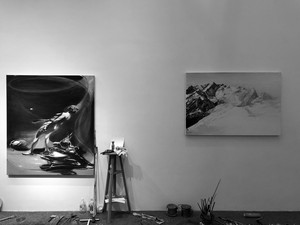
Jia Aili’s studio in Beijing, with Variation (left) and Snowline (right; both 2020) in progress
JALSometimes I really enjoy the state of quasi-madness that the process of painting involves. But I don’t dare to really let myself go. The moment I find myself in such a state, where I’m about to release something from deep inside, I feel the need to drag myself back—there are still customs and orders that I need to respect. Yet there always exists something deep inside that is luring me to embrace madness with open arms.
SQLMaybe it’s a kind of tragic ecstasy following the spirit of Dionysus?
JALSomething like that. It must be something close to the depths of consciousness, something that one cannot acquire through study or experience.
SQLWhen was the last time that you really let yourself go?
JALI would say it was when I painted the brushstrokes on Hermit from the Planet (2015–16). I can still remember the anxiety and fervor I felt while painting that canvas. My hand was trembling so violently that my pens and brushes simply couldn’t catch up with my emotions. The only thing I could think of was to use my hand to grasp the pigments and apply them directly on the canvas. There happened to be a mop nearby that we used to clean the studio. Before giving it a second thought, I was using it to paint. Later, in a documentary film that captures this process, I could see that long after I had finished that section and stepped out of the scene, the canvas was still shaking. In the film director’s words, I was fighting with or even hammering the canvas.
What I mobilized there was a fervent emotion. Yet when I was painting the mountains in these new works, the emotions I mobilized were totally different. I felt completely peaceful and tranquil.
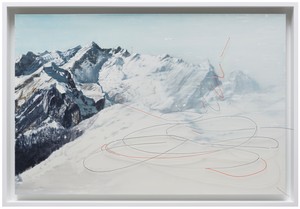
Jia Aili, Snowline, 2020, oil on canvas and silver pen and acrylic on plexiglass, in artist’s frame, 44 ¼ × 64 × 3 ½ inches (112.5 × 162.5 × 9 cm). Photo: Yang Chao Studio
SQLThis is really interesting. You said you mobilized these strong emotions. Do you consider them something that you can readily harness, as a talented actor can do?
JALAfter finishing Hermit from the Planet, I went off to do some other things and the emotion simply vanished. So I guess it takes some fermentation, a period of time that is free of distraction, for me to enter that emotional state and paint.
SQLI guess some instinctive elements are involved here. You have to first own these emotions and energies so that they can be expressed in your work.
JALWell, yes and no. I wouldn’t call it instinctive yet. Maybe one day I will be able to harness that power; then I can boast that it’s my instinct. I have heard that the conductor Carlos Kleiber had the ability to always perform extremely well onstage. But this state wouldn’t last. Sometimes he needed to disappear for several months by himself in order to find that emotional state again, and the orchestras had no choice but to wait for him to return.
I watched a documentary about Picasso when he was sixty years old. It showed that he could really harness this feeling as if it was his instinct. There we had a true master of art.
A blank canvas is just like a patch of untouched snow. The moment you have a brush in hand, your biggest mental struggle is that you have to understand that the canvas will be smeared and destroyed; it’s rather cruel. But you have to endure throughout the process. As the disorder increases, the further your work will deviate from simplicity. As painters, we then need to find a way to return to simplicity.

Jia Aili, The Rhythm of Cycle, 2020, oil on canvas and acrylic on plexiglass, in artist’s frame, 54 ⅝ × 49 ¼ × 3 ⅝ inches (138 × 125 × 9 cm). Photo: Yang Chao Studio
SQLEarlier we spoke about calligraphy. Has calligraphy taught you anything about painting?
JAL“Tracing” and “writing.” The very action of tracing always presupposes another object or an original that is being traced. Yet when one enters the stage of “writing,” one transcends that object. The artist is on another level.
SQLAre you “tracing” your mountains or “writing” them?
JALThe tricky thing is that if you have been taken captive by your object, it will show on the canvas. If you have not been conquered by it, a true spirit of painting will emerge and the canvas will become a real painting.
SQLHow do you tell whether a canvas has become a “real painting”? Do you have a way of determining this?
JALYou have to feel it through “fear and trembling,” as [Søren] Kierkegaard put it. For an artist, nothing is worse than numbness and callousness. Sometimes I can tolerate being “skilled” at creating a work as long as I am still being original. But as soon as this state starts slipping out of my consciousness toward mechanical repetition, I have to stop.
SQLThis reminds me of [G.W.F.] Hegel’s “master/slave” dialectic. It seems that between the painted image and the painter there exists a very complex dialectic in which the artist could be taken captive by the image. So how can you escape from your mountains’ grip?
JALThere is a line from a poem by [Qing Dynasty poet and painter] Zheng Xie that refers to bamboo found in the mountains: “clench the mountain tightly with my teeth and penetrate the rock with my feet.” It describes the relationship between mind and matter. One should guide one’s consciousness toward one’s deeper inner world through Chan meditation, and express it.
以中文阅读采访(PDF)
Translated from the Chinese by Vincent Zhang; artwork © Jia Aili Studio
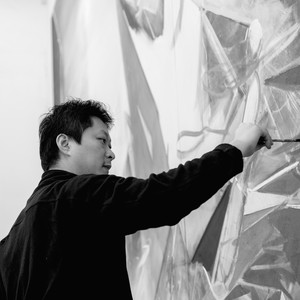
Jia Aili was born in Dandong, China, in 1979 and lives and works in Beijing. In 2004 he graduated from the New Representationalism Studio of the Lu Xun Academy of Fine Arts in Shenyang, China, where he subsequently taught from 2005 to 2007, before focusing exclusively on his career as a painter. He participated in the collateral events of the 54th Venice Biennale in 2011. Photo: Nan Lin

Dr. Shen Qilan is an art critic, curator, and writer. She holds a PhD in philosophy from the University of Münster, Germany. Formerly the editorial director of Art World magazine in China, she has curated exhibitions, conceived programs, and written catalogue essays for international museums and foundations, including the Museum of Contemporary Art Australia, Sydney; Uffizi, Florence; and Long Museum, Shanghai, among many others. She is the author of numerous articles and several books on art.

Jia Aili speaks with curator Philip Tinari about his arts education, his working process, and his desire to expand the talking points around painting.
This video presents a behind-the-scenes look at Jia Aili’s studio in Beijing. He elaborates on his in-progress works, the complexity of his compositions, as well as his philosophies of and motivations for painting.
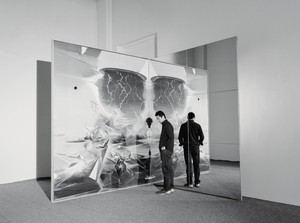
The artist speaks with the Quarterly about interrogating perceptions, questioning illusions, and the primacy of intuition.
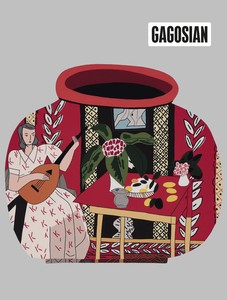
The Spring 2019 issue of Gagosian Quarterly is now available, featuring Red Pot with Lute Player #2 by Jonas Wood on its cover.
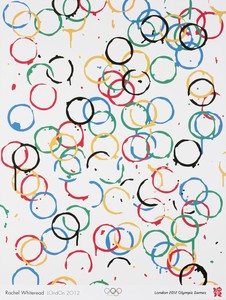
The Olympic and Paralympic Games arrive in Paris on July 26. Ahead of this momentous occasion, Yasmin Meichtry, associate director at the Olympic Foundation for Culture and Heritage, Lausanne, Switzerland, meets with Gagosian senior director Serena Cattaneo Adorno to discuss the Olympic Games’ long engagement with artists and culture, including the Olympic Museum, commissions, and the collaborative two-part exhibition, The Art of the Olympics, being staged this summer at Gagosian, Paris.

On the occasion of Art Basel 2024, creative agency Villa Nomad joins forces with Ghetto Gastro, the Bronx-born culinary collective by Jon Gray, Pierre Serrao, and Lester Walker, to stage the interdisciplinary pop-up BRONX BODEGA Basel. The initiative brings together food, art, design, and a series of live events at the Novartis Campus, Basel, during the course of the fair. Here, Jon Gray from Ghetto Gastro and Sarah Quan from Villa Nomad tell the Quarterly’s Wyatt Allgeier about the project.
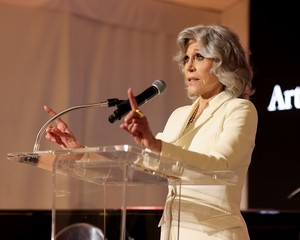
Art for a Safe and Healthy California is a benefit exhibition and auction jointly presented by Jane Fonda, Gagosian, and Christie’s to support the Campaign for a Safe and Healthy California. Here, Fonda speaks with Gagosian Quarterly’s Gillian Jakab about bridging culture and activism, the stakes and goals of the campaign, and the artworks featured in the exhibition.
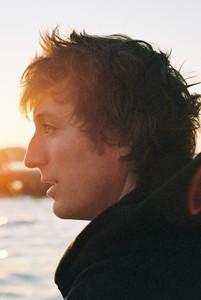
An interview with Marcantonio Brandolini d’Adda, artist, designer, and CEO and art director of the Venice-based glassware company Laguna~B.

In celebration of the life and work of Frank Stella, the Quarterly shares the artist’s last interview from our Summer 2024 issue. Stella spoke with art historian Megan Kincaid about friendship, formalism, and physicality.

Multi-instrumentalist, singer, songwriter, and composer Lucinda Chua meets with writer Dhruva Balram to reflect on the response to her debut album YIAN (2023).
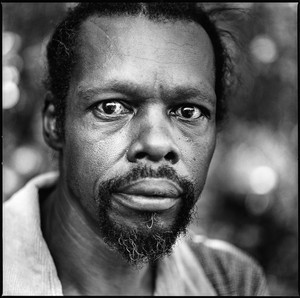
Lonnie Holley’s self-taught musical and artistic practice utilizes a strategy of salvage to recontextualize his past lives. His new album, Oh Me Oh My, is the latest rearticulation of this biography.

Richard Armstrong, director emeritus of the Solomon R. Guggenheim Museum and Foundation, joins the Quarterly’s Alison McDonald to discuss his election to the board of the Helen Frankenthaler Foundation, as well as the changing priorities and strategies of museums, foundations, and curators. He reflects on his various roles within museums and recounts his first meeting with Frankenthaler.